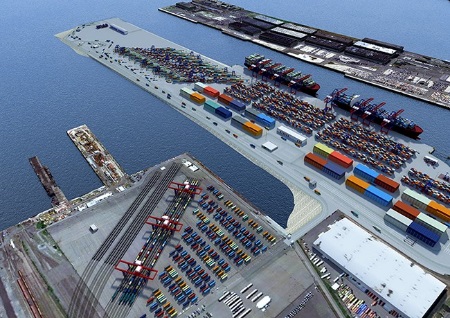Facility Development: New York/New Jersey, Corpus Christi, Vancouver, Everglades, Redwood City
![]() Print this Article | Send to Colleague
Print this Article | Send to Colleague
GCT USA, New York & New Jersey Port Authority Break Ground For New Expressrail Port Jersey Facility
Bayonne, NJ- GCT USA and the Port Authority of New York and New Jersey on Dec. 19 broke ground for the ExpressRail Port Jersey facility ("Greenville Yard"). The facility will be a major ship-to-rail port project located directly adjacent to the recently expanded, state-of-the-art GCT Bayonne container terminal. This project will complete the agency’s more than $600 million initiative that establishes direct access to on-dock or near-dock rail service for all of its major marine terminals.
Designed to complement the terminal’s big ship handling capabilities and quick transaction time, the intermodal yard will have an annual capacity of 250,000 container lifts, or 430,000 TEUs. The intermodal facility – scheduled for completion in mid-2018 – will connect the Port of New York and New Jersey’s GCT Bayonne terminal to CSX and Norfolk Southern’s extensive rail network, reaching key inland markets. The facility will support the port’s continuously increasing number of rail lifts and higher percentage of East Coast market share.
In line with GCT Bayonne’s Green Marine certification, the purpose-built ExpressRail Port Jersey facility will feature 9,600 feet (2,926 meters) of track serviced by high-efficiency, electric cantilevered rail mounted gantry cranes featuring LED lighting. Every container lifted to a rail car displaces the need for 1.5 truck trips. Emission reductions resulting from the switch from truck to rail transport, over the life of the intermodal facility, are expected to total 415 tons of nitrogen oxide and 108 tons of particulate matter. It also will eliminate 375,000 trucks from crowded highways annually and reduce carbon dioxide emissions by 18,300 tons annually.
Construction costs for the GCT Bayonne near-dock intermodal facility are supported by a $56 million investment from the Port Authority. The funding will come from monies collected through the Cargo Facility Charge, a per-container fee assessed on cargo shipped through the Port of New York and New Jersey to cover the costs of critical road, rail and security infrastructure projects.
"As the port business continues to grow with the arrival of new, lower emissions, larger ships, it’s critical that we invest in projects to deal with the increase in cargo in a sustainable way, maintaining our quality of life," said Port Authority Executive Director Pat Foye. "This project will not only expedite the movement of cargo through the region, but will take hundreds of thousands of truck trips off the road annually, providing a significant environmental benefit to the region."
"Given the highly competitive nature of the port business, shippers must be assured that the goods they bring here are smoothly and cost effectively delivered to market," said Port Department Director Molly Campbell. "This project further enhances GCT Bayonne’s high-efficiency, ensuring that this terminal, and the Port of New York and New Jersey as a whole, maintain the competitive edge to attract new business for years to come."
"Building on our proven experience as a world-class developer of marine and rail facilities, this partnership with the Port Authority will ensure that the most advanced terminal on the East Coast is complemented with an effective and efficient rail facility, increasing our big ship surge capacity and decreasing overall cargo dwell times," said John Atkins, President of GCT USA.
"GCT is committed to growing our business in a responsible way," said Stephen Edwards, President & CEO of GCT Global Container Terminals Inc. "By decoupling our growth from carbon emissions and reducing road traffic, the new rail yard will ensure our customers continue to enjoy best-in-class service with an improved footprint."
Cheniere’s Corpus Christi LNG nears halfway mark
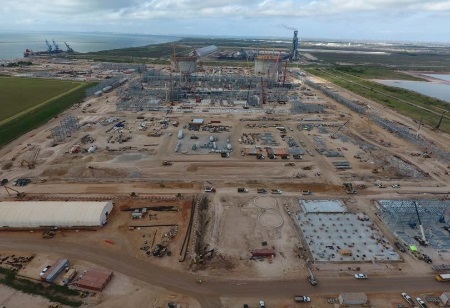
Photo/Cheniere
Corpus Christi, TX - Cheniere’s second liquefaction and export project, Corpus Christi, located on the U.S. Gulf Coast, has reached 47.1 percent completion.
According to the latest monthly report by Cheniere, engineering has progressed to 99.7 percent, procurement has progressed to 64.1 percent, while Bechtel’s direct hire construction through November was 18.5 percent.
During the month of November, the erection of structural steel, setting of the mechanical equipment, installation of above ground pipe, cable tray and the amine underground pipe and firewater pipe continued at the Train 1.
Concrete placement was completed in the hot oil surge drum and sump, compressor substation piperack, HVAC North foundation, amine storage and thermal oxidizer and amine regen and acid gas removal area.
One of the milestones during November was the raising of the roof of the LNG storage tank C while the construction of bearing ring continued on the LNG tank A.
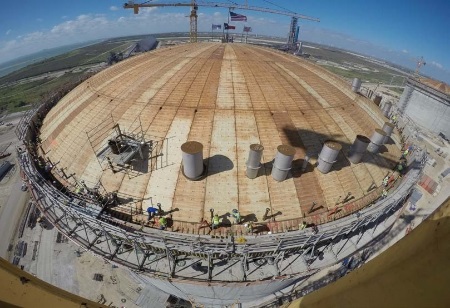
In the marine area, drilling and placing shafts at the east jetty continued as well as the concrete placement at the jetty’s columns and trestles.
Activities planned for the month of December 2016 have been on track, Cheniere said in the report.
Port of Vancouver USA expands industrial footprint
Vancouver, WA - The Port of Vancouver USA is building a new industrial building in hopes of attracting new manufacturing, warehousing and distribution businesses to the port.
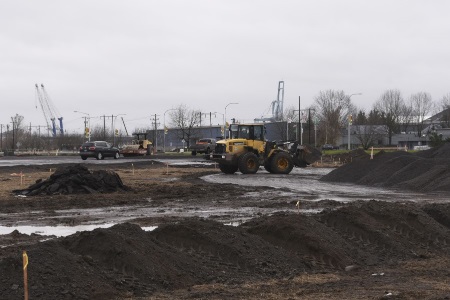
The Centennial Industrial Building is being constructed along Northwest 32nd Avenue, across from the port’s administrative office. It will be a 125,000-square-foot light-industrial building capable of being customized for up to five tenants.
Abbi Russell, spokeswoman for the port, said the port’s leasable facilities have been 99 percent occupied for the last three years and the new building will create opportunities for more growth.
"This is critical to achieving the mission of bringing economic benefit to the community," she said.
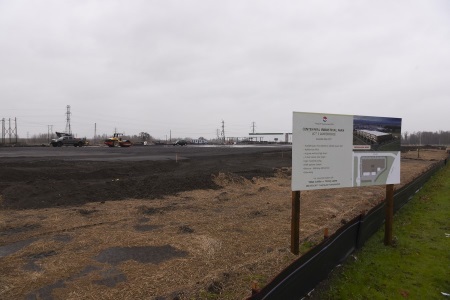
Mike Schiller, director of business development at the port, said staff has spoken with several interested parties about moving into the building, but as of yet there aren’t any committed tenants. Schiller also said an extra incentive for manufacturers is the port’s status as a federal foreign trade zone. That allows manufacturers to bring in raw materials — which ordinarily might be taxed individually and at different rates — and combine them into finished goods which are taxed after a sale is made. The zone is supervised by the U.S. Customs and Border Protection office in Portland.
The building is currently under construction and is set to be complete by sometime next summer. The port plans to rent the space at about $0.48 per square foot with a surcharge of $0.85 for per square foot for office space.
The Centennial Industrial Park was partly funded with a grant from the Washington State Department of Commerce. The Centennial Industrial Building is being funded through revenue bonds.
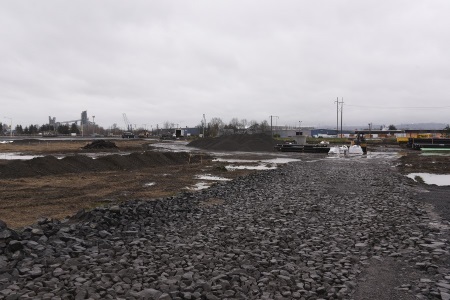

Members of the Broward County Congressional Delegation, local elected officials and community leaders gather for a press conference to celebrate the signing of the Water Infrastructure Improvements for the Nation (WIIN) Act by President Obama.
Maintenance dredging of the Port of Redwood City's shipping channel was completed in mid-December, restoring the port’s navigation channel to its authorized depth of minus 30-feet for the first time in almost two years. Dredging was performed under the auspices of the U.S. Army Corps of Engineers.
Maintaining this full depth allows ocean carriers to bring in fuller and more economic loads of cargo needed for construction in the San Francisco Bay/Silicon Valley area, while also facilitating the recycling of scrap metal by exporting to Asia. The bigger Panamax ships serving the Port of Redwood City and providing materials for the construction of roads and buildings in the region, require a dependably dredged channel and turning basin to assure efficient operation.
Maintaining and improving the nation's marine navigation network is the responsibility of the U.S. Army Corps of Engineers, utilizing funds generated by the Harbor Maintenance Tax paid by importers. Each year the Corps and Congress must determine how to allocate these limited funds among the hundreds of navigation projects nationwide. U.S. Senator Diane Feinstein and Representative Jackie Speier were instrumental in helping secure $7.9 million in funding for the just completed Redwood City Channel dredging.


Senator Feinstein and Rep. Speier helped secure funding

